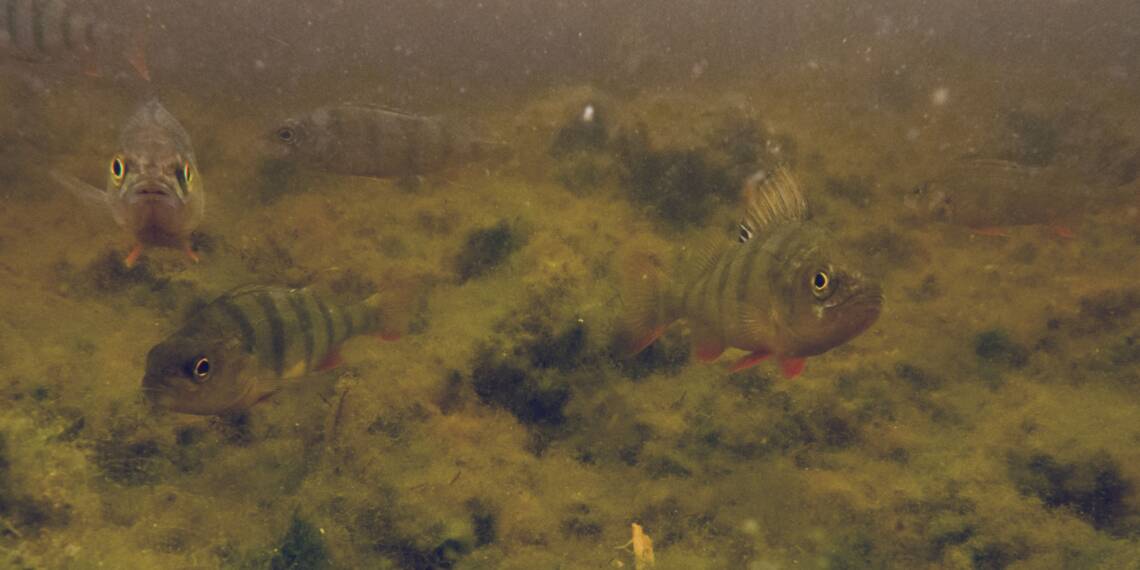
Eutrophication varies by marine area
Some of the marine areas surrounding Finland are more sensitive to eutrophication than others. The concentrations of nutrients that fuel eutrophication in seawater also vary by region.
Sensitivity to eutrophication is determined by the presence of a salinity gradient layer, known as the halocline. The halocline separates the saltier deep water from the less salty surface water. It weakens water mixing and thus deteriorates the oxygen situation in deep waters. Oxygen deficiency can reduce the amount of available nitrogen and, on the other hand, increase internal loading, i.e., the release of phosphorus from bottom sediments into the water.
The strongest halocline in Finland’s marine areas is in the waters south of the Åland Sea and the Archipelago Sea, i.e., in the Northern Baltic Proper. There, the oxygen situation in deep water has permanently deteriorated.
In the Gulf of Finland, the strength of the halocline varies over time and location. In the Gulf of Bothnia, the halocline is weak because the Gulf of Bothnia is relatively isolated: the salty deep water of the Baltic Sea’s main basin can only flow weakly over the ridges south of the Åland Sea.
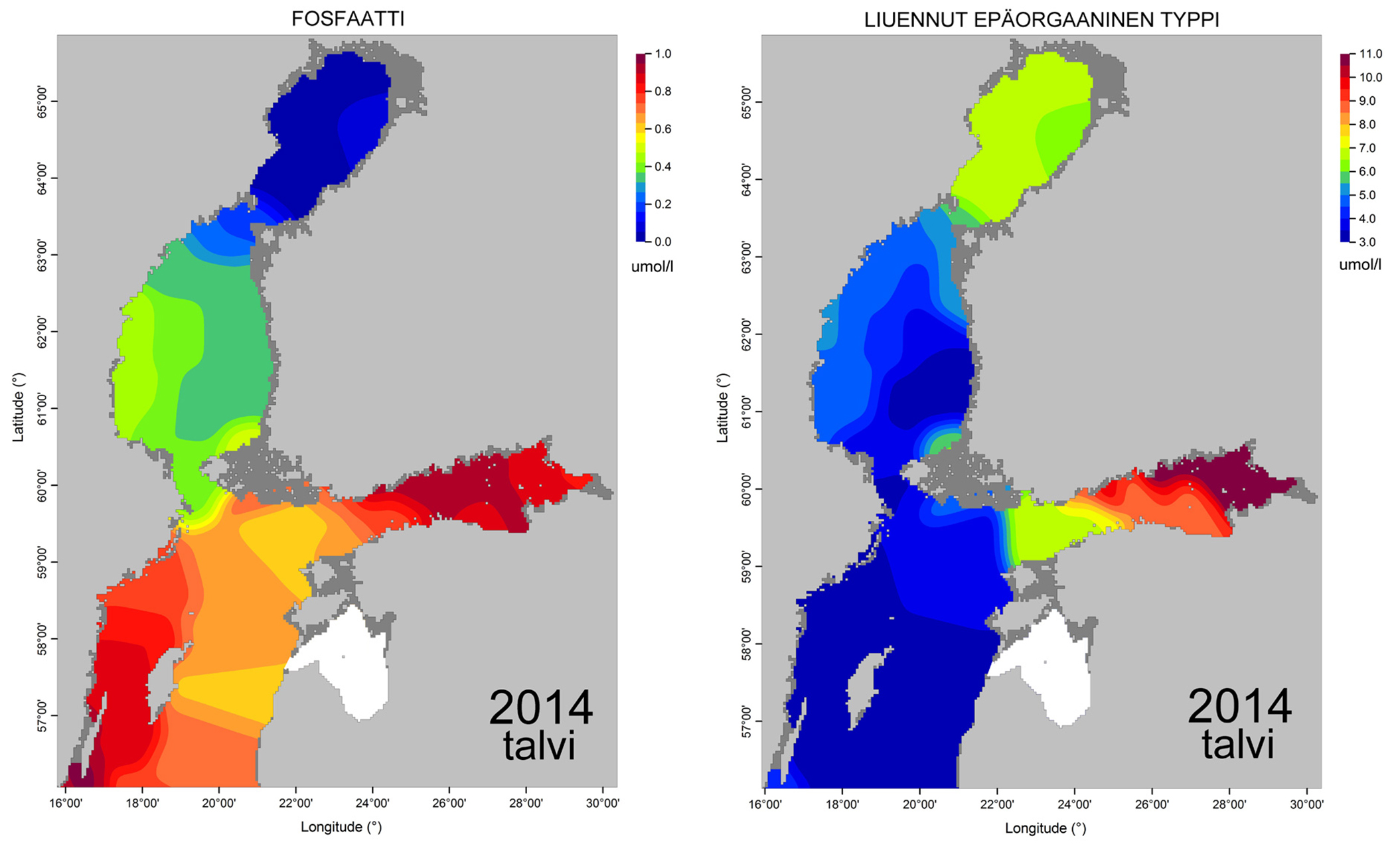
The Gulf of Finland suffers from high nutrient levels and oxygen depletion.
The Gulf of Finland is one of the most heavily loaded parts of the Baltic Sea. Its catchment area has a dense population and a lot of agriculture. In addition to the load from the catchment area, the nutrient concentrations in the Gulf of Finland are regulated by the deep water flowing from the main basin of the Baltic Sea and the oxygen situation at the bottom.
The coastal waters of the Gulf of Finland are most affected by diffuse pollution from rivers in the catchment area, as well as coastal settlements and industry. Their impact is particularly significant where the coastline is fragmented and water exchange is poor.
Major sources of pollution in the eastern Gulf of Finland include the St. Petersburg metropolitan area and large rivers that bring nutrients, such as the Neva River, Narva River, Luga River, and Kymi River. Of these rivers, the Neva is by far the most significant source of nutrient pollution: its nutrient flow is more than ten times that of the Kymi River.
Phosphorus pollution from St. Petersburg decreased significantly when the city’s wastewater treatment plant underwent a major renovation in 2013. The large phosphorus discharges from the Luga River have also been brought under control. However, the current emission situation is unknown, as Russia was excluded from the activities of the Baltic Marine Environment Protection Commission after the start of the war in Ukraine.
Thanks to emission reductions, the phosphorus situation in the eastern parts of the Gulf of Finland has improved since the turn of the millennium. There have been no major trend-like changes in nitrogen concentrations in the 2000s, either in the east or the west.
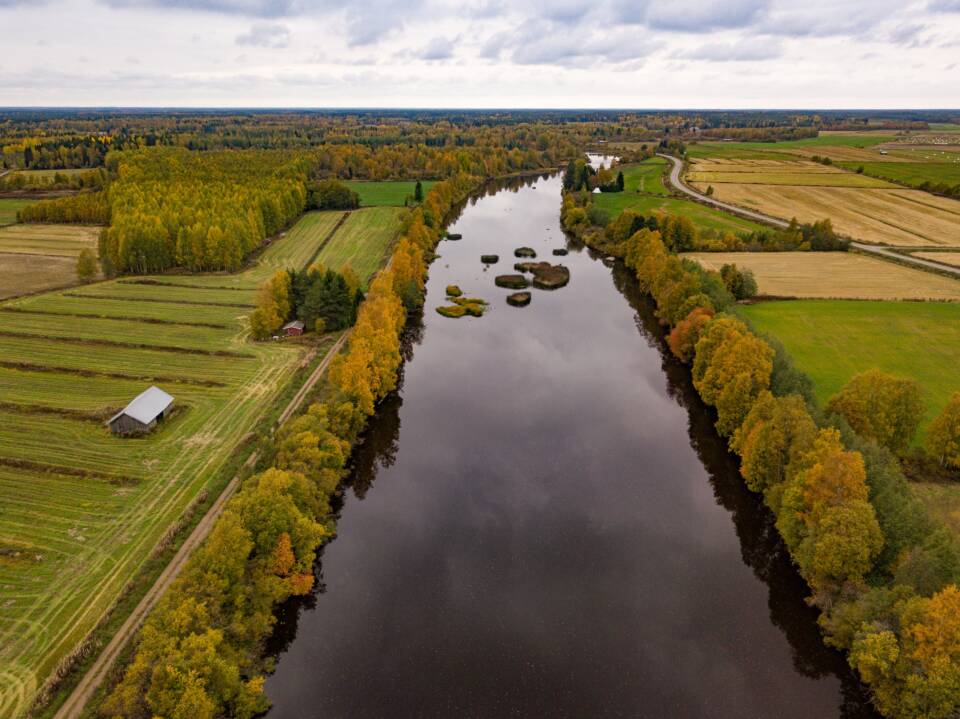
The poor oxygen situation at the bottom of the Gulf of Finland causes internal loading, i.e., the release of phosphorus from bottom sediments into the water. This, together with currents carrying nutrients from the open sea, deteriorates the condition of coastal waters even where local loading is minimal.
Eutrophication currently affects the shallow and archipelagic coastal waters west of Porkkalanniemi the most. The open waters of the Gulf of Finland are also quite nutrient-rich, which is evident in the blue-green algae blooms in the open sea.
Phosphorus concentrations have increased in the northern parts of the Baltic Sea’s main basin
Currents from the Gulf of Finland, the southern Baltic Proper, and the Gulf of Bothnia converge in the northern Baltic Proper.
In the main basin, the water is permanently stratified in terms of salinity, preventing deep water from mixing with the oxygen-rich surface water. This has led to a permanently anoxic water layer below 100 meters, causing phosphorus to be released from the sediments.
Both phosphorus and phosphate concentrations have increased in the area since 1990, while nitrogen concentrations have rather decreased. The decrease in nitrogen concentrations can be explained by reduced nitrogen deposition and decreased loading from the catchment area.
The Archipelago Sea is sensitive to eutrophication
The Archipelago Sea is shallow and fragmented, with no real open sea. This limits water exchange and makes the sea area sensitive to eutrophication. The impact of nutrient emissions does not spread evenly everywhere. Nutrient loading from the land mainly burdens the inner parts of the Archipelago Sea.
On the other hand, the outer archipelago has also gradually become eutrophic. This is influenced not only by nutrients transported from the inner archipelago but also by atmospheric deposition and nutrient-rich waters flowing from the Gulf of Finland and the norther Baltic Proper.
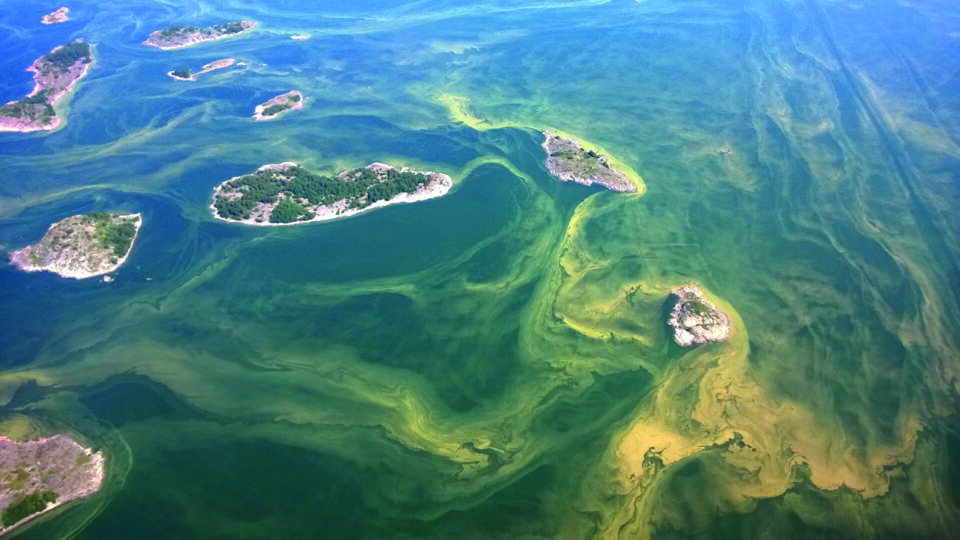
The phosphorus level in the surface water of the Archipelago Sea has increased since the 1980s, reflecting the rise in phosphorus concentrations in the main basin of the Baltic Sea. It is also possible that more phosphorus is being released from the bottom sediments than before. This is indicated by the particularly strong increase in phosphorus concentration near the bottom.
The largest nutrient polluter of the Archipelago Sea is agriculture. There is a lot of farming in the sea’s catchment area, the fields are prone to erosion, and the rivers carry a lot of nitrogen and phosphorus into the sea. About four-fifths of the phosphorus load and two-thirds of the nitrogen load in the Archipelago Sea come from agriculture. Local loading is also caused by settlements and fish farming.
The Bothnian Sea is gradually becoming eutrophic
The situation in the Bothnian Sea has previously been clearly better than in the Gulf of Finland and the Archipelago Sea. However, the sea area has gradually become eutrophic since the 1980s. In recent decades, blue-green algae blooms have also started to appear in the Bothnian Sea. The reason is the increase in phosphorus concentration in the water, which is mainly due to the fact that more phosphorus flows from the main basin of the Baltic Sea. This is indicated by the increase in salinity of the water layers near the bottom of the Bothnian Sea.
The nitrogen concentration in the Bothnian Sea, on the other hand, has decreased since the 1980s. The background of this development is likely the decrease in nitrogen deposition from the air.
Several rivers flowing from agricultural areas discharge into the Bothnian Sea, and the sea is also burdened by coastal cities and factories. Enhanced wastewater treatment has significantly reduced point-source pollution, but diffuse pollution has not eased. Agriculture is by far the largest nutrient polluter of the Bothnian Sea.
The thresholds of the Åland Sea ensure that significant amounts of salty deep water from the Baltic Proper do not enter the Bothnian Sea. The Bothnian Sea is only weakly stratified in terms of salinity, which means that the oxygen situation in the sea is quite good – although it has slowly deteriorated in the 2000s as salinity has increased.
The openness of the coast, on the other hand, promotes horizontal mixing of the water. As a result, high nutrient concentrations only occur in a narrow coastal zone. The weakest situation is at the mouth of the Kokemäki River, which is burdened not only by diffuse pollution brought by the river but also by the wastewater from the city of Pori and its industries.

The Bothnian Bay shows slight signs of eutrophication
Of Finland’s marine areas, the Bothnian Bay is the least eutrophic. However, its condition has deteriorated, as indicated by the increase in the concentration of chlorophyll a, or green pigment. The water in the Bothnian Bay is very low in salinity, and it does not stratify according to salinity. The oxygen situation at the sea bottom is good.
The nutrient levels in the Bothnian Bay are most affected by the load brought by large rivers. A significant part of this is natural runoff, i.e., nutrient runoff independent of human activity. However, agriculture, forestry, and peat production in the river catchment areas increase the river load. The impact of wastewater from coastal settlements and industries is limited to the nearby waters of the emission sources.
In addition to the load from the catchment area and the coast, other factors also regulate the nutrient concentrations in the Bothnian Bay: water exchange with the Bothnian Sea and internal processes in the sea that bind or remove nutrients.
The phosphorus concentration in the water of the Bothnian Bay is small compared to other marine areas. This is due to the low phosphorus load and the fact that the oxygenated bottom material binds phosphorus.
Nitrogen concentrations have slightly decreased from the peak years of the late 1980s and early 1990s. The decrease is due to the reduction in nitrogen load entering the Bothnian Bay, which has been influenced by the decrease in nitrogen load from Sweden and the reduction in nitrogen deposition. The nitrogen load from the Finnish side has not decreased.
-
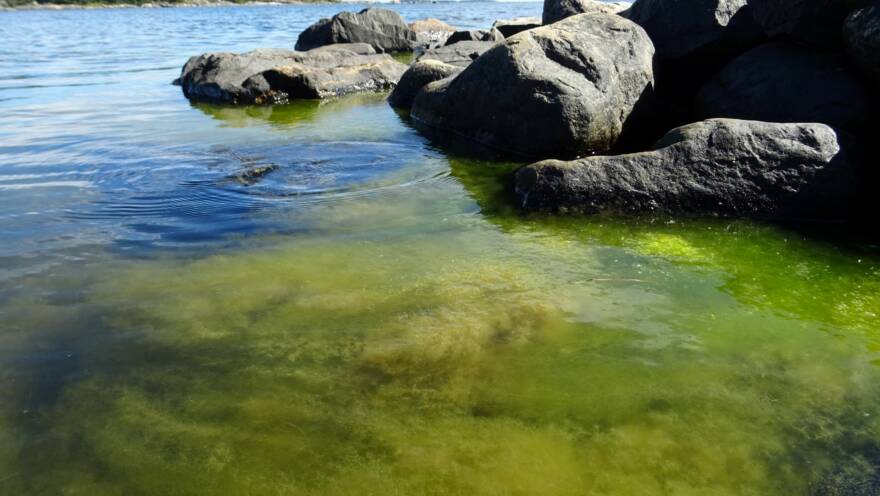 Find out more
Find out moreNutrients and oxygen
-
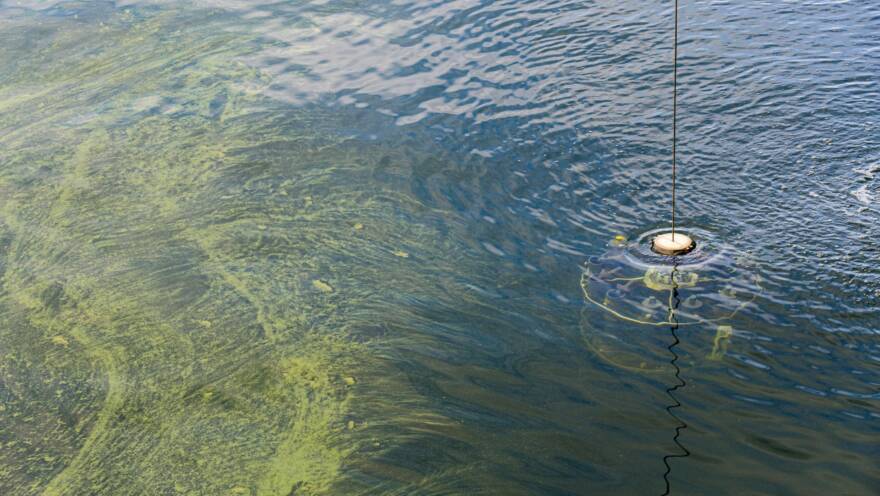 Find out more
Find out moreMonitoring the state of the Baltic Sea

